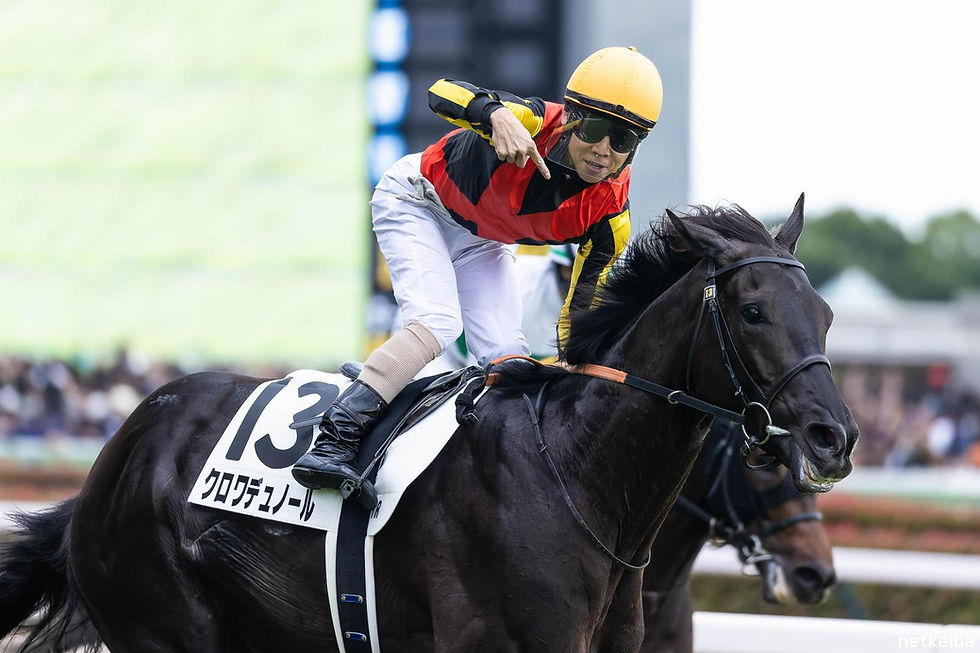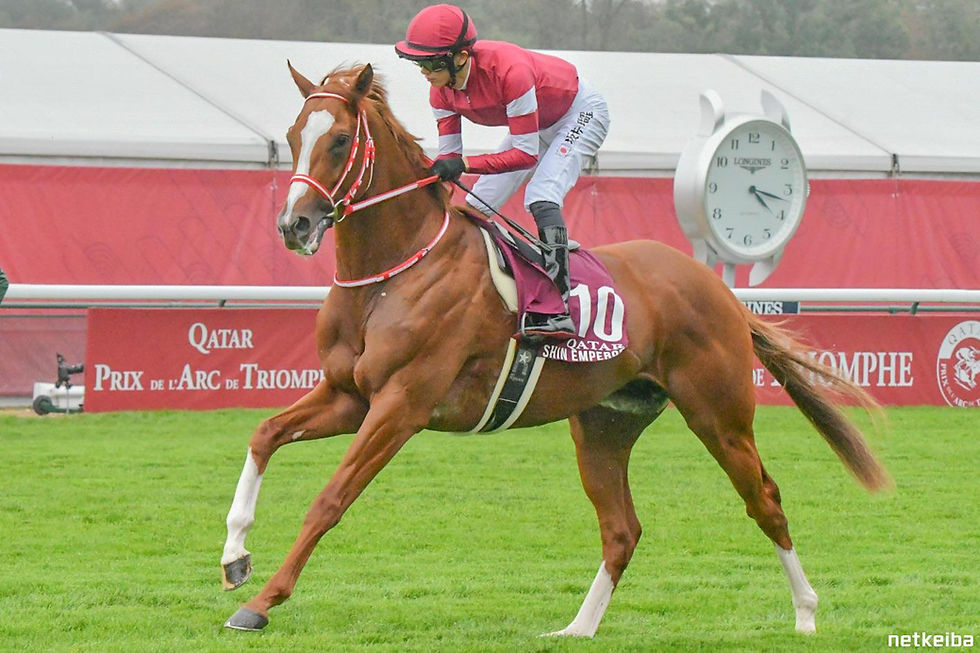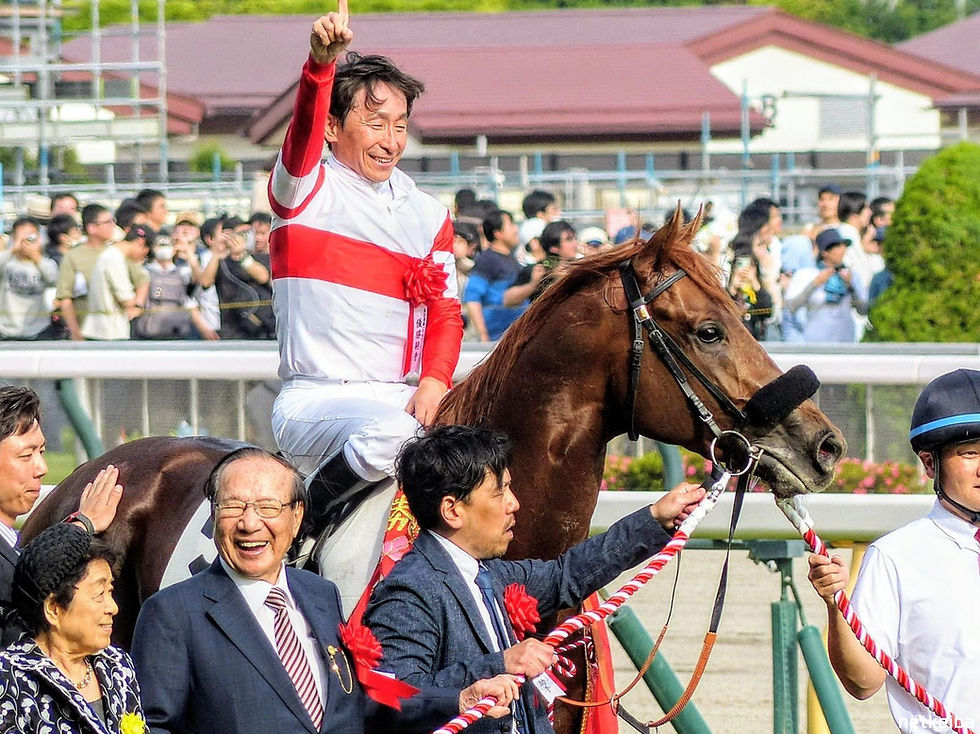Byzantine Dream’s Arc Bid Begins with Prix Foy Test
- Archie Brookes

- Sep 3
- 5 min read
Updated: Sep 8
Qatar Prix Foy (G2), 2400m, 4yo+ - Longchamp, Sunday 7 September 2025

Overview
Japan’s late-maturing stayer Byzantine Dream enters the G2 Prix Foy (2400m) as a pivotal stage in his preparation for the Prix de l’Arc de Triomphe. Though rarely a direct predictor of Arc success, the Foy remains an essential diagnostic: a race that reveals fitness, tactical options, and course aptitude at the very venue of Europe’s most prestigious middle-distance contest.
The role of the Prix Foy
The Prix Foy is part of Arc Trials Day, held roughly three to four weeks before the Arc itself. Restricted to four-year-olds and older, it mirrors the Arc’s distance of 2400m and functions as a competitive simulation under real race conditions. For trainers and analysts, the Foy is valuable because it highlights whether a horse can navigate Longchamp’s particular demands: its long stretch, subtle undulations, and the deceptive false straight that often punishes premature moves.
Historically, the Foy has not been a frequent launchpad to Arc victory. Only three horses have completed the Foy-Arc double: Allez France (1974), Sagace (1984), and most recently Waldgeist (2019). More commonly, the Foy identifies form cycles, confirming which horses are on an upward trajectory and which may need tactical recalibration. From a scholarly perspective, it is a race of informational value rather than statistical determinism.
Japan’s historical engagement
Japan’s sustained pursuit of the Arc has repeatedly intersected with the Foy. El Condor Pasa set the precedent in 1999, using a Foy victory as a springboard to a narrow Arc defeat against Montjeu. Orfevre, a Triple Crown winner at home, won the Foy in both 2012 and 2013, performances that reinforced his Arc favoritism even though he finished runner-up each time. Deep Bond added a win in 2021, displaying Japan’s evolving tactical strategies on French soil.
The Japanese model has become clear: ship early, acclimatise thoroughly, and test readiness in a preparatory race. In contrast, Byzantine Dream arrived in France only in late August, roughly two weeks before the Prix Foy. His shorter acclimatisation window makes his campaign a departure from the traditional Japanese pattern, even as his trajectory - a late developer who flourished over extended distances - marks him as atypical compared to Japan’s previous Arc challengers.
Byzantine Dream: profile and development
Byzantine Dream is a four-year-old colt by Epiphaneia, whose early reputation was tied to Classic aspirations but who has since been repurposed as a stayer.
Early career: His win in the G3 Kisaragi Sho at three positioned him briefly as a Triple Crown prospect. However, poor results in the Satsuki Sho and Tokyo Yushun ended those ambitions. His fifth in the Kikuka Sho (3000m) hinted at stamina capacity.
2025 season: International success arrived in February with a commanding performance in the G2 Red Sea Turf Handicap (3000m) in Saudi Arabia, where Oisin Murphy guided him to victory. In May he finished second in the G1 Tenno Sho (Spring, 3200m), producing a resolute staying effort at Kyoto. Positioned midfield early, he moved into contention on the final circuit and stayed on strongly up the long stretch, though he could not reel in the winner Redentor. The performance, achieved in testing ground and against Japan’s best stayers, underscored both his stamina and determination, further validating his staying credentials.
Current preparation: Transferred to France in late August, Byzantine Dream has been stabled at Chantilly. Trainer Tomoyasu Sakaguchi has emphasised progressive conditioning, citing a 1200m workout in ~1:19.4 and a follow-up featuring a ~11.0s final furlong as indicators of peak fitness.
Jockey dynamic: Murphy retains the ride for both the Foy and the Arc, bringing continuity of strategy and a prior record of success with the horse.
The central analytical question is whether a horse proven at 3000m+ can translate that stamina into the tactical explosiveness required at 2400m in top-class European company.
Byzantine Dream just missed out on the G1 Tenno Sho Spring back in May
The competitive field
The 2025 Prix Foy field is compact but strategically rich, offering Byzantine Dream a rigorous comparative measure.
Sosie (FR): Andre Fabre’s Sea The Stars colt is the domestic benchmark. With victories in the Grand Prix de Paris, Prix Niel, and spring Group 1s in the Ganay and d’Ispahan, Sosie combines proven stamina with tactical acceleration. Narrowly beaten in last year’s Arc, he is again positioned as France’s primary hope.
Los Angeles (IRE): Aidan O’Brien’s Camelot colt brings a résumé including the Irish Derby and Tattersalls Gold Cup. He ran below expectations in Ireland in mid-August, where a lack of fitness was evident. That run is widely interpreted as a necessary stepping-stone, with connections confident he remains on track for his primary objective: the Arc.
Map Of Stars (FR): Rising under Francis-Henri Graffard, this Sea The Stars colt has demonstrated a potent finishing kick, notably in the Prix d’Harcourt (G2) and a close second in the Ganay. His style makes him a threat in races with a controlled early tempo.
Trustyourtinstinct (IRE): As a gelding, he is ineligible for the Arc, but Joseph O’Brien has targeted the Foy as an opportunity for a Group 2 success. His stamina and likely front-running role could shape the tactical complexion.
Almaqam (GB): Trained by Ed Walker, Almaqam is an emerging talent still testing his ceiling. His most recent effort was a solid second in the York Stakes (G2) at York in July, which showed progress but also highlighted that he remains unproven at this level.
Tactical considerations: If the race is run at a sustained pace - likely if Trustyourtinstinct presses early - Byzantine Dream’s stamina becomes a relative advantage. In contrast, a slow early tempo would shift emphasis to the acceleration of Sosie and Map Of Stars.
Track and conditions
Projected ground is good-to-soft, which is typical for early September. Sosie is already proven under such conditions, and Japanese stayers, including Byzantine Dream, generally adapt well. The tactical pitfall remains Longchamp’s false straight, where timing errors are magnified. Murphy is expected to ride conservatively in mid-division, delaying his move until the final 300m.
Market implications
Byzantine Dream is currently priced around 20/1 in early Arc markets. A podium finish in the Foy would likely shorten him to mid-teens; an outright victory would reposition him as a serious outsider with momentum. For owner Kazumi Yoshida and trainer Tomoyasu Sakaguchi, success here would validate an ambitious campaign and enhance Japan’s long-standing Arc narrative.
Evaluating outcomes
Victory: Would make Byzantine Dream the fourth Japanese horse to win the Prix Foy after El Condor Pasa, Orfevre, and Deep Bond. Such a result would significantly boost Arc expectations.
Placing: Demonstrates competitiveness at 2400m and supports continued Arc participation.
Subpar run: While discouraging, it is unlikely to alter Arc plans given the broader logistical commitment.
Conclusion
Byzantine Dream possesses stamina, preparation, and elite jockeyship. What remains uncertain is whether he can meet the requirements of tactical acceleration that typically distinguish Arc winners. The Foy should yield the first empirical evidence, providing a clearer picture of whether his proven staying ability can be adapted to the sharper demands of 2400m at the highest level. A strong showing here would not only justify his place in the Arc field but also signal that he is capable of competing with established Group 1 performers, whereas a disappointing effort may confirm that his optimum lies at longer trips.
Enjoyed this piece?
If this spotlight helped, please consider giving it a share and follow me on X @archieb101
for more Japanese racing coverage, sectionals, and betting angles. You can also check archiebrookesracing.net for the latest spotlights and race-day notes. Thank you for reading.



Comments